|
Every time I go to Ghost Ranch, I am drawn to paint the view outside the studio. Whenever I try, I run into the limits of my ability - I don't have the skill to make it look the way I want. Last week, after finishing a very intense painting, I was drawn to try again. Instead of trying to paint the view, I just tried to paint how I felt in the moment looking at the view. The result doesn't look much like the hills but it was still most satisfying of all my efforts to paint the high desert.
0 Comments
Sooner or later you are going to end up with something in your painting that you just don't like. Maybe a drip or a slip of the brush in the wrong place. Maybe your skill fell short of your intentions and no one else would know that brown blob was supposed to be a dog. The basic idea of process painting is that the results don't matter. What do you do when they do matter and you aren't happy about it? Here are a few strategies for dealing that uncomfortable situation: 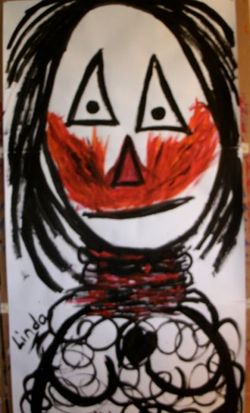 - Work with it in your painting. Try doing more of what you don't like and see what happens. Or paint your response, let the "not liking" show up in the painting too. - Remind yourself that it really doesn't matter how it looks. After all, your subconscious (or your muse, if you prefer) wanted you paint the idea. That idea is still there, even if you don't like how it was executed. - Try to think of as a misbehaving child - love it for being what it is, even if it wasn't what you expected. - Notice the part of you that doesn't like it. "Not liking" is a feeling. It's OK and you don't have to do anything at all about it - just go right on not liking it. What do you think of the painting above? It was done by my friend and fellow teacher, Linda Bolton. She titled it, "I Might be Pissed". She didn't like it and was surprised when I asked to include in the gallery for my website. I love it. If you want to comment on the painting or on this essay, please offer your thoughts in the comment section below. I grew up believing that the key to success in life was be responsible and hard working. One needs to plan (and worry) and strive (and worry) and do your best at all times (or else). This is all (mostly) true but it is not the whole story. Process painting opens up other possibilities. If it truly doesn't matter what the picture looks like, then I don't have to have a plan. If mistakes are part of the process, I don't need to do my best. Most of all, if I stay connected to myself in the moment, it is very hard to worry. I struggle with the idea that I don't have to worry the future into existence but process painting has taught me, again and again, that if I can let go of planning and worry, then wonderful and unexpected things happen. But it still didn't feel finished. So I added pink and red, greens, yellows and white and came out with something quite surprising:
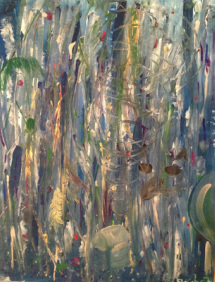 Forest shadows by EB Forest shadows by EB One of the rules that I learned in process painting was not to try to cover up “mistakes” in my painting. Not say I wasn’t tempted. Sometimes it was an errant brush stroke or drip in the wrong place. Other times, I painted something and didn’t like how it looked. There is a practical reason for this rule – painting over usually doesn’t on a technical level. However, paint doesn’t erase – once it is on the paper, it stays. Even if I tried to paint over it, the dim form of the “mistake” would still be visible underneath. There is deeper reason as well. One of the gifts of process painting is practice letting go of judgment and quieting our inner critic. The stronger the dislike, the greater the possibility that it is connect to deeper feelings about ourself, especially the parts of ourself that we don’t like very much. How do we know something is a mistake? Our critic is telling us so. What happens if we ignore that bullying voice? This is a chance to find out what it is like to live with imperfection, accept it and (maybe) even embrace it. What if you understand this logic but you still really want to cover something in your painting? Then paint over it and see what happens. After all, process painting is about the experience, not the results. Accept it, paint over it, or transform it something else, as long as long as you are paying attention your choices, it doesn’t really matter which one you choose. Last week I decided to do some process painting, although I wasn’t particularly looking forward to what the painting might bring out. I didn’t know where to start but I could my teacher saying “Trust the brush.” So I picked a color (black) and made a squiggly line. And another one. I still didn’t know what I was painting but my muse, that creative, intuitive, nonverbal part of me, was enjoying the swirling lines. After a while, my logical mind got bored and started to chatter. “Do I need to buy more blue paint?” “What can I make for dinner that will use up those green beans?” When I let my logical mind think about the actual painting, the inner critic immediately woke up: “That’s ugly. It’s trite. It’s boring. It doesn’t mean anything.” I had to use my firmest teacher voice to tell myself, “That doesn’t matter. This is about the process. Shut up and keep painting.” And so it went. The heart and hand painting instinctually. The logical mind chattering and criticizing, occasionally interrupted by muse asking me to get her some more paint. 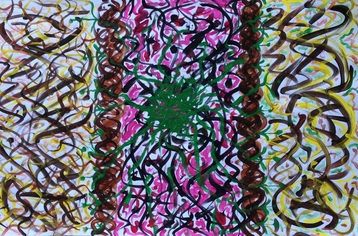 In the end, my critic was still grouchy, my logical self had an updated to-list and my muse was secretly smiling. Painting the picture wasn’t “fun” but it did make me feel better. A week later, my critic and I have finally reached a compromise. I would like to have an attitude of simple acceptance toward the painting. However, my critic still has strong opinions, mostly negative. So, for now, she has agreed not to hate the painting and I have conceded that she doesn’t have to like it. And my muse, who lives in the moment, is trying to tempt me back in the studio so she can paint, play and discover again. 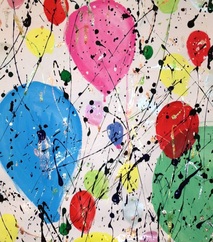 “There is a monster coming out of that cloud so I added more white because I don’t want a monster in this painting.” “I’m done.” “What do you notice as you look as your painting?” “I’m feeling sad but I don’t want to put sadness in this painting. I want it to stay happy.” “I’m stuck.” “What color wouldn’t belong in this painting?” “Black! Black really doesn’t belong.” “I’m noticing a lot of energy around black. What would happen if you put it in anyway?” “But it’s supposed to be a happy painting. Black isn’t a happy color.” Our inner judge knows how things “should” be. It will give you so many reasons to ignore the quiet of voice of intuition that is calling you to take a risk, appreciate the complexity of life and to allow things to continue to evolve and change. So, what might happen if you listen to that invitation, allow the monsters, the sadness, the color black to show up in your painting?
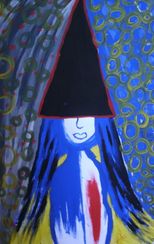 The best advice I heard recently for how to start doing intuitive painting was, "Paint like a four year old". After all, when four year old children draw, they don't worry about whether the dog looks like a dog or if their drawing is beautiful or means something. They just do it. They use line and color instinctively to express themselves. They may draw pretty flowers growing under a smiling sun or robots eating airplanes or flowers growing out of robots heads. And it is all OK. Since each of us was a four year old, once upon a time, we each have the capacity to draw in that natural intuitive fashion. This is my invitation to you - forget about all the parents, teachers and art experts that have taken residence in your brain and come and spend a morning painting like a four year old. 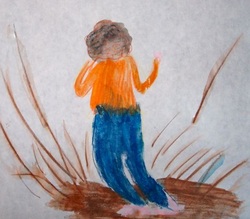 When I talk about process painting, many people like the idea of expanding your creativity and self-knowledge by playing with painting. At the same time, they often hesitate. "I'm not very creative", "I'm not intuitive" and, most often, "I can't draw!" I tell them, "It doesn't matter. The focus on your process, not the results. No one else will care what the painting looks like." They believe me, but they still don't want to do it. The problem isn't other people, it is their inner critic. That voice inside your head that points out all of your mistakes and shortcoming. It tells you, "It's not good enough." "You can/should/must do better." It tells you, "There is no point in doing something if you can't do it well." But there is a secret that your inner critic doesn't know. Sometimes doing well is irrelevant. Can you fail at jumping in a puddle? Process painting is like jumping the mud puddle. There can be big splashes and small squishes. You might even be uncomfortable if you step on a pebble or your toes get cold. In the end, most people will say that they feel lighter, freer for the experience. And, in any case, they are guaranteed to be able to say "I chose to jump in a puddle today and I did it. Hooray for me!" |
AuthorProcess painting is such a magical experience that I want to share. My invitation to you: Paint. Play. Discover. Archives
March 2016
Categories
All
|
| The Reflecting Canvas |
|

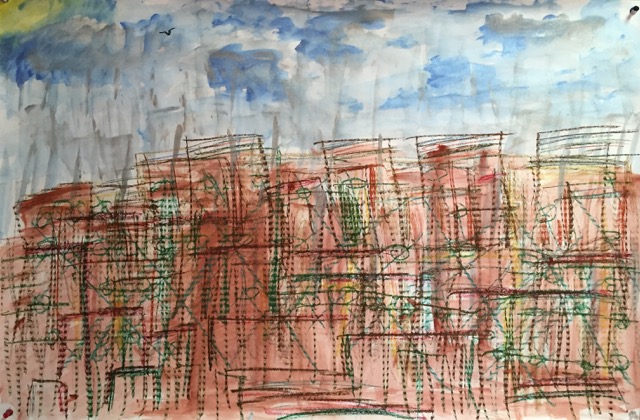
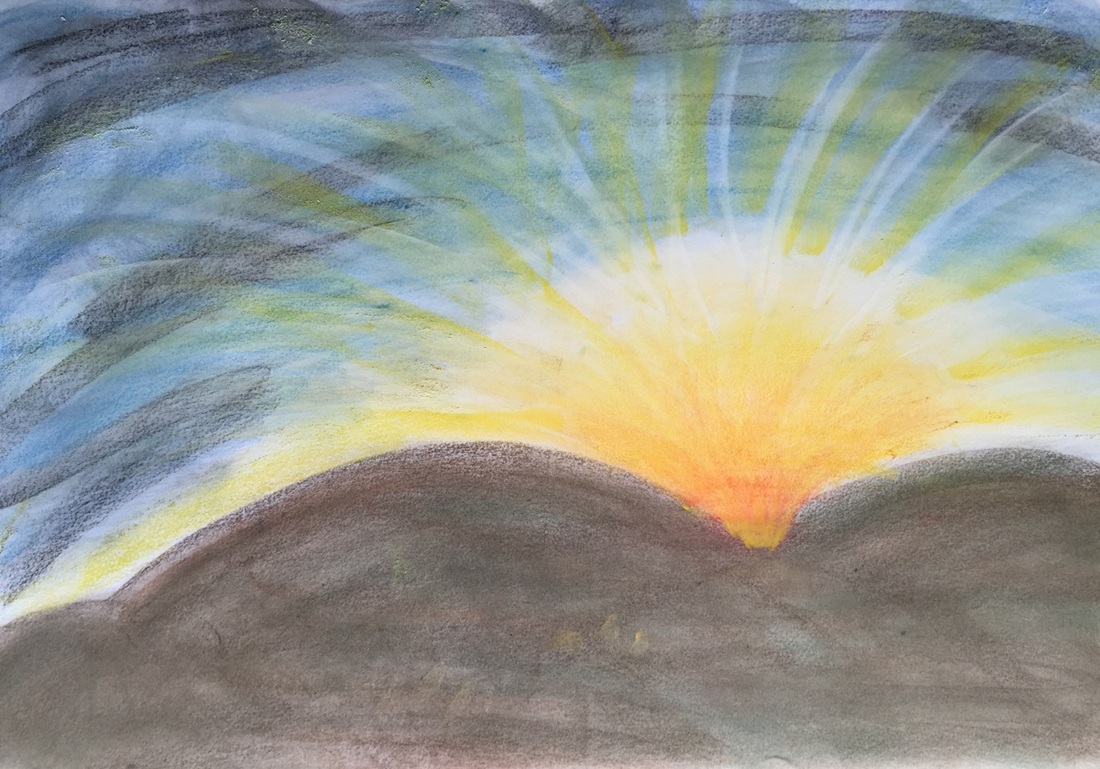
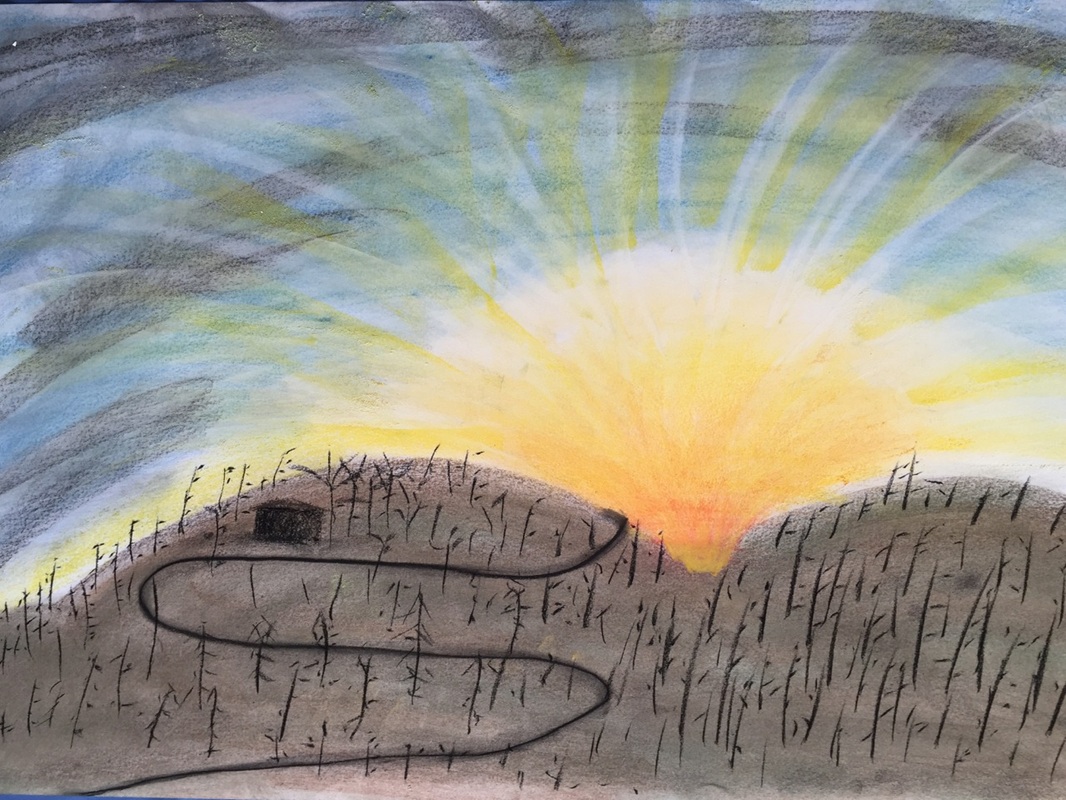
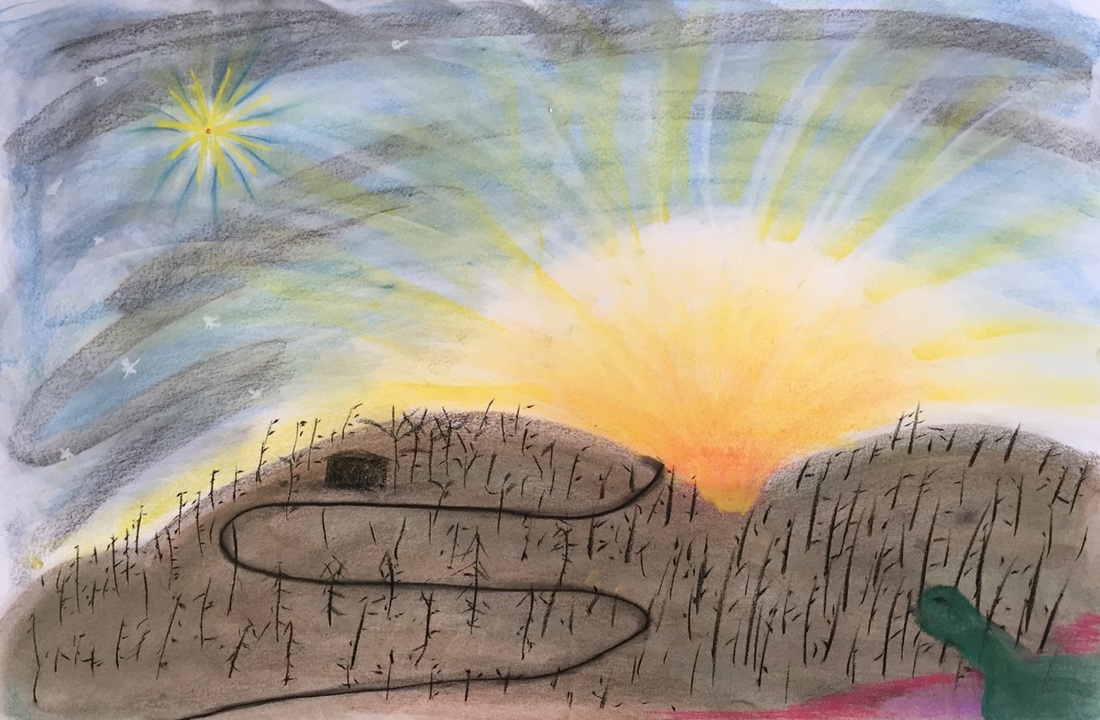
 RSS Feed
RSS Feed
